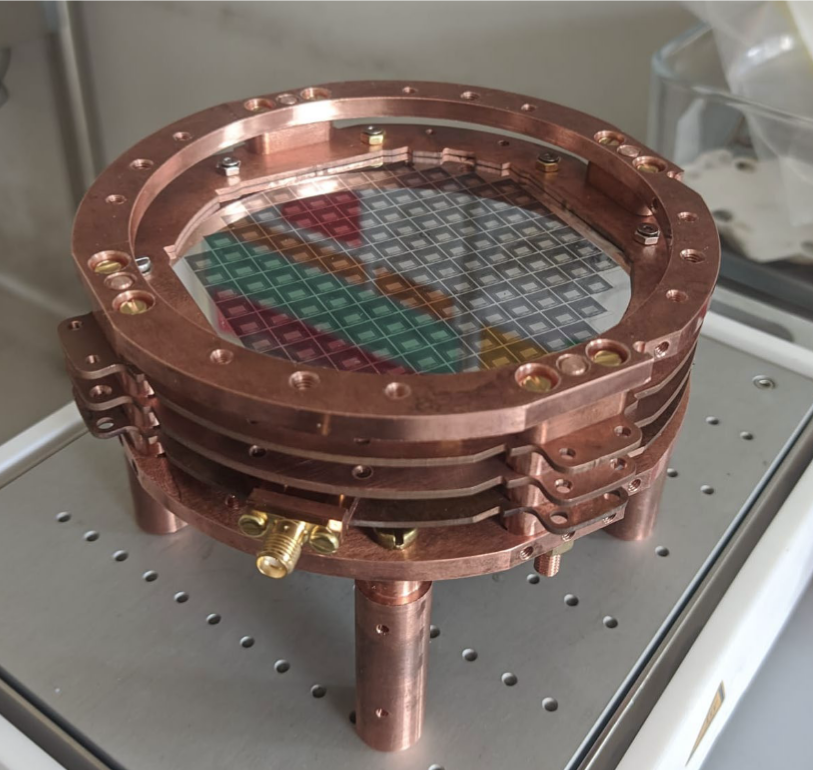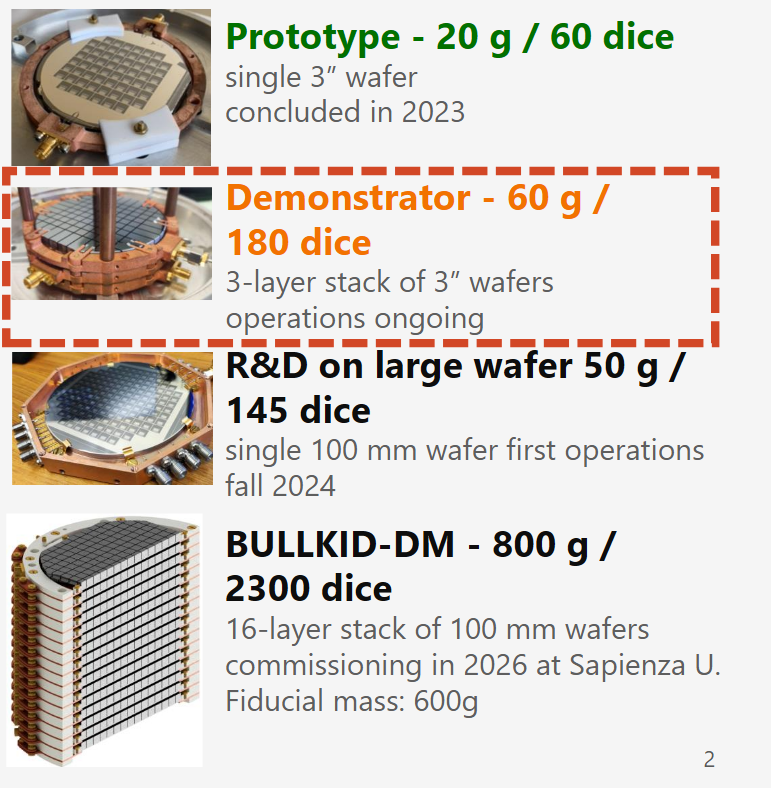Physical motivation
Calorimeters measure the depositions of energy within a volume, without intrinsic distinction of particle type, and in the solid-state variant, the target volume is usually a crystal. This variant is often the most sensitive, because, according to the third law of thermodynamics, \(S \rightarrow S_0\). Then, since the heat capacity \(C(T) \) is defined by as:
$$ C(T)=T\cdot\frac{dS}{dT} $$
We find that the heat capacity of a solid becomes very small very quickly as temperatures drop. Hence, very small depositions of energy, such as those caused by a nuclear recoil, can cause large changes in the crystal’s temperature.
However, the heat capacity of a volume extensive, the larger the mass of an object, the larger the heat capacity. Hence, solid-state calorimeters tend to be very small, only offering \(\mathcal{O}\) (1 – 10 g) of target material per detector unit. This makes scaling up the mass of such sensitive experiments very difficult.
The BULLKID project aims to bypass this issue by creating a large array of calorimeters which can be measured as a single object, providing ~100 g of target mass with a single object, while retaining a very low energy measurement threshold, thus allowing the creation of calorimetric experiments with target masses of \(\mathcal{O}\) (1 kg).
Operating principle
BULLKID arrays are in effect single detectors, manufactured in one piece out of a single substrate, upon which an array of Kinetic Inductance Detectors is fabricated out of a thin superconducting film.
These sensors detect energy depositions in the substrate below through phonons generated by particle collisions. By cutting grooves in the substrate, the total volume of the device is separated in small isolated sensing volumes (known as dice), each being read out by a single KID, hence avoiding performance losses related to the scaling in size of the target volume.
The design is deliberately intended to be substrate-independent, and modular: the substrates which could be used to fabricate BULLKID arrays are varied, though the current R&D focus is on Silicon and Germanium, and the design of single KIDs can be optimised independently of the whole array, gradually introducing upgrades to the array design as better performing KID designs are developed. This is what allows the wafers to have been adapted both for dark matter detection for BULLKID-DM, and for CEvNS measurements for BULLKID-ν within a short timeframe.
Moreover, the single segmented detector approach has further benefits: by avoiding passive holding structures for each sensitive volume, adjacent dice can be used to conduct anti-coincidence analysis, excluding any source of background that would deposit energy in multiple locations, such as higher energy gamma rays or charged particles, surface contamination, or radioactive decay events in the substrate where the emitted particle escapes the volume.

